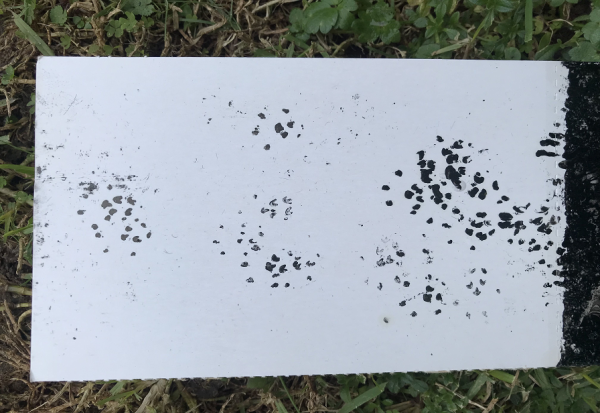Urban predator control looks to be paying off in New Plymouth, with new data showing a decline in the city’s rat population.
In more good news, a new Manaaki Whenua – Landcare Research report [PDF, 1.4 MB] shows there has been an increase in fantails, grey warblers and silvereyes across New Plymouth over the past five years.
These are promising signs that trapping is making a difference to our native birds, says Towards Predator-Free Taranaki’s Steve Ellis.
“Our community should be proud of what it has achieved so far however as a region we are still at the start of our predator-free journey, with a lot of work ahead of us.”
Towards Predator-Free Taranaki carries out rat monitoring annually at the same 100 locations across New Plymouth – mainly public parks and walkways. At each spot pre-inked and baited tracking tunnels are left out overnight for one night each April and checked for predator footprints the next morning.

In 2018 when the Towards Predator-Free Taranaki project was launched, 33% of the tunnels contained rat footprints. That dropped to 19% in 2019 then rose slightly last year to 26% after Covid 19 restrictions affected the checking and rebaiting of traps.
This year the average rate across the city was down to 9.8%. Mr Ellis says that’s primarily the result of the growing number of traps in backyards and public spaces.
There are about 7,000 rat traps in New Plymouth, but only around a half of those are registered on Trap.NZ – a free website and app used to log traps and catches.
“We encourage people to use Trap.nz to help us build a more complete picture of what’s going on and where we need to focus our efforts.”
Several “hot spots” for rats were identified during this year’s monitoring which the Towards Predator-Free Taranaki team will target, alongside volunteers, community groups and New Plymouth District Council.
“The goal is to keep lowering that rat percentage every year.”
Mr Ellis says there has been a spike in interest in the predator-free movement recently, as locals realise the impact community trapping is having.
Of course, removing rats is not just good for biodiversity. They can do significant damage to property, with winter a prime time for infestations as they look for warm, dry homes to live. They also carry disease and are a potential risk to health.
Despite the declining numbers, there is a long way to go before birds and other species will truly be safe from predators such as rats, Mr Ellis warns.
“Unfortunately, there are still plenty around, even if you can’t see them! If you haven’t already, set a trap in your backyard and you might just be surprised at what has been lurking in your neighbourhood.”